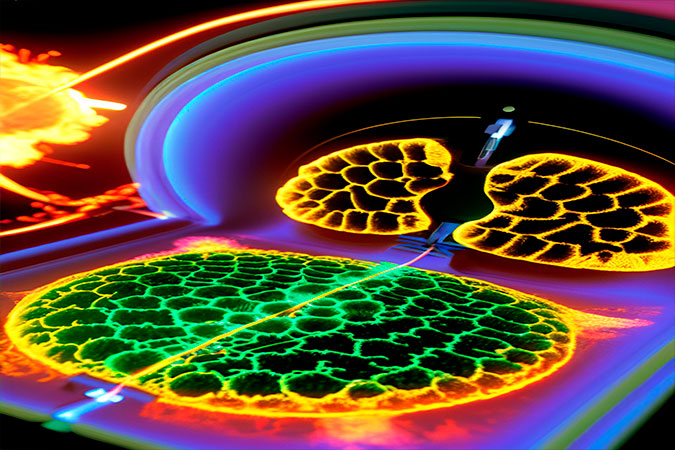Illuminating the Unseen: Positron Emission Tomography in Medical Imaging
“Discover the Cutting-Edge: Positron Emission Tomography Unveiled” provides an in-depth exploration of positron emission tomography (PET), a revolutionary imaging modality that employs positron-emitting radionuclides to detect and visualize various diseases. This concise article delves into the principles of PET, highlighting its reliance on positrons, antimatter particles, and the commonly used radiotracer fluorodeoxyglucose (FDG). It emphasizes PET’s exceptional role in cancer detection, treatment assessment, and recurrence evaluation. By shedding light on the remarkable capabilities of PET, this article demonstrates its profound impact on modern medical imaging and its potential for shaping the future of healthcare.

Positron Emission Tomography in Medical Imaging
Positron Emission Tomography (PET), a cornerstone of modern nuclear medicine, has revolutionized our understanding and management of various health conditions, particularly in oncology. It employs a unique imaging modality that utilizes positron-emitting radionuclides, offering a remarkably sensitive and comprehensive approach to diagnosing and monitoring diseases.
The world of PET hinges on the phenomenon of antimatter, specifically the positron. A positron is an anti-electron, bearing the same mass but opposite charge. It is a product of the decay of proton-rich radionuclides, most of which are synthesized in a cyclotron and have incredibly short half-lives.
The linchpin of PET imaging is the radiotracer, with fluorodeoxyglucose (FDG) tagged with fluorine-18 being the most commonly used. FDG mimics glucose, a crucial energy source for cells. The fluorine-18 atom attached to the FDG molecule is a positron emitter. When injected into the body, the radiotracer is absorbed by cells that metabolize glucose at a high rate.
This process is particularly evident in cancer cells, which typically have a high rate of glucose metabolism due to their rapid, uncontrolled growth. As these cells take up the FDG, they effectively become ‘highlighted’ due to the high concentration of the radiotracer. When the positron from the fluorine-18 atom collides with an electron in the body, it results in the emission of two gamma rays traveling in opposite directions. These gamma rays are detected by the PET scanner, producing a “hot spot” on the imaging display.
By mapping these hot spots, PET scans provide a detailed picture of physiological activity in the body, offering valuable insights into the presence, location, and stage of cancerous tumors. Moreover, PET scans have proven crucial in assessing the effectiveness of cancer treatments and detecting any signs of recurrence.
Importantly, the information derived from a PET scan goes beyond that of other imaging techniques. Unlike X-ray, CT, or MRI, which primarily provide anatomical pictures, PET explores the metabolic and molecular processes happening within the body. This gives physicians an unparalleled understanding of disease dynamics, allowing for more accurate diagnoses and personalized treatment approaches.
With continuous advancements in medical technology, PET imaging is set to become even more integral in future healthcare, offering novel approaches to disease detection, diagnosis, and treatment monitoring. It is a testament to the incredible power of nuclear medicine and its ability to illuminate the complex world within our bodies.











